- Editorial Offices
- 325 Brantly Hall
- Missoula, MT 59812
- (406) 243-2488
- themontanan@umontana.edu
- Icons By Maria Maldonado
With help from UM, a small town in Nothwestern Montana takes on a rebranding effort to heal from its rocky past
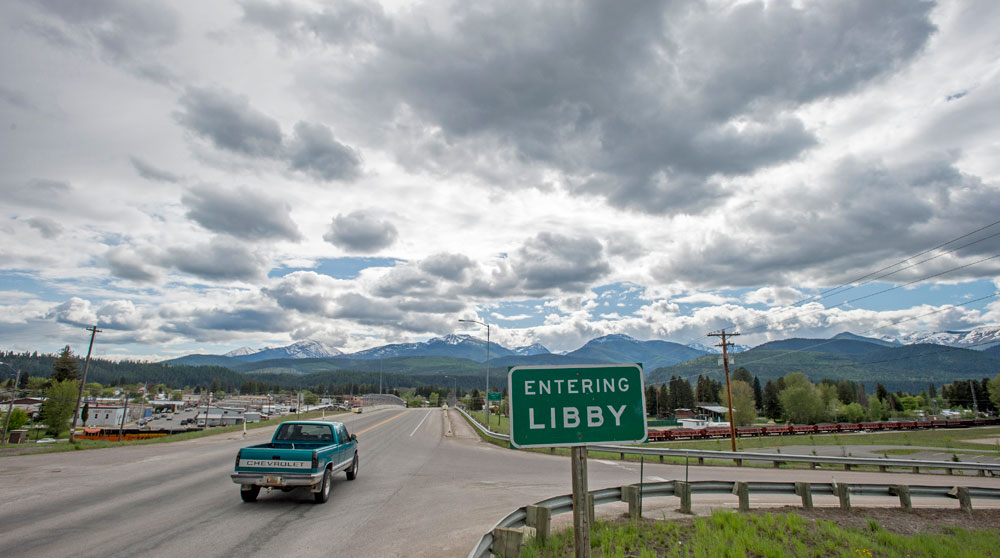
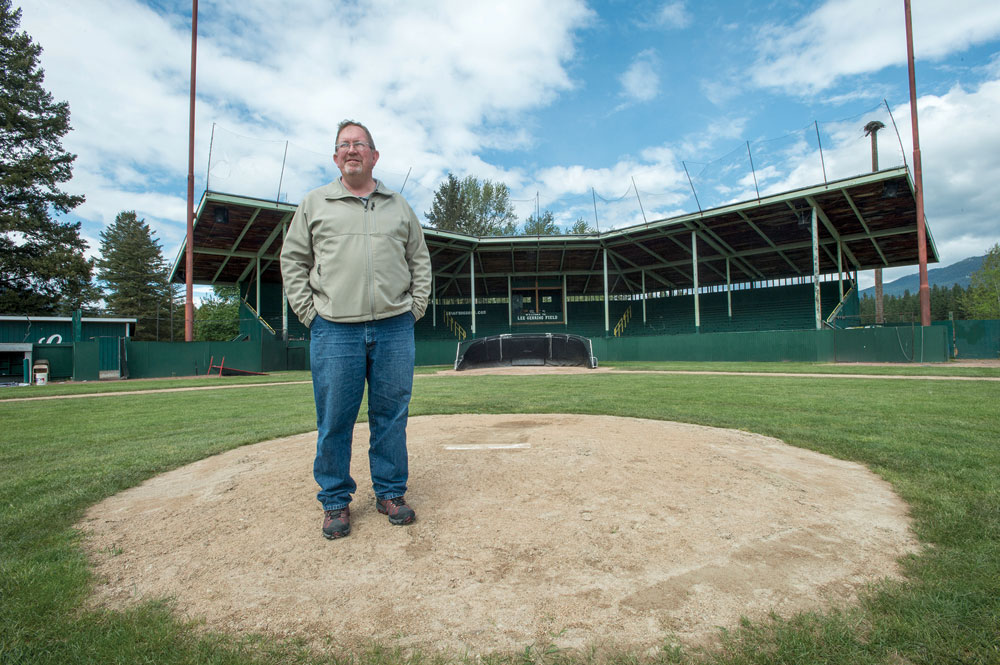
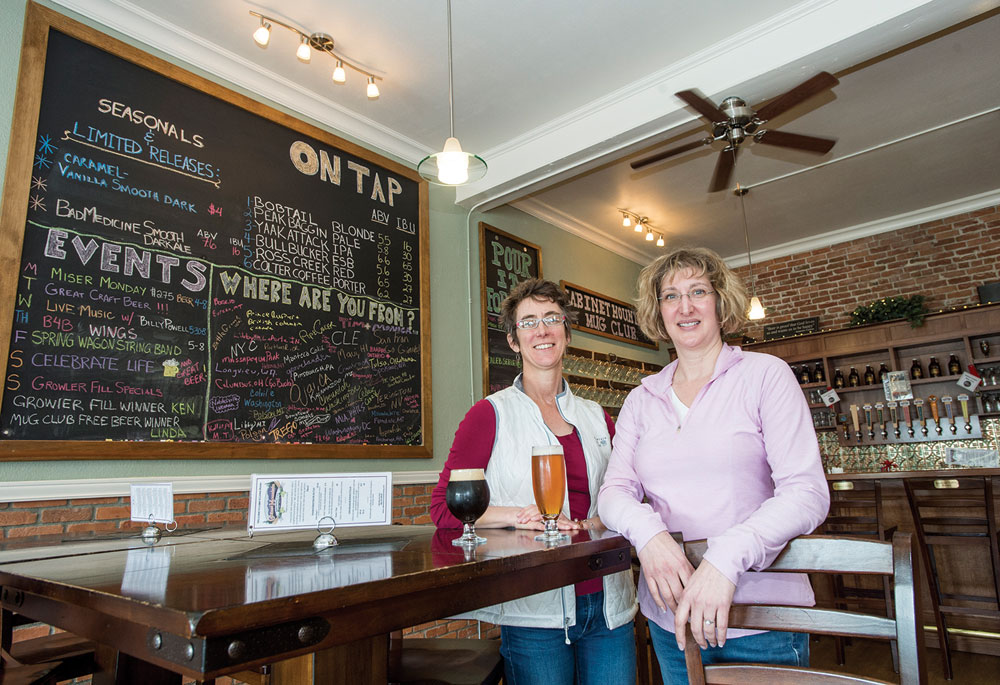
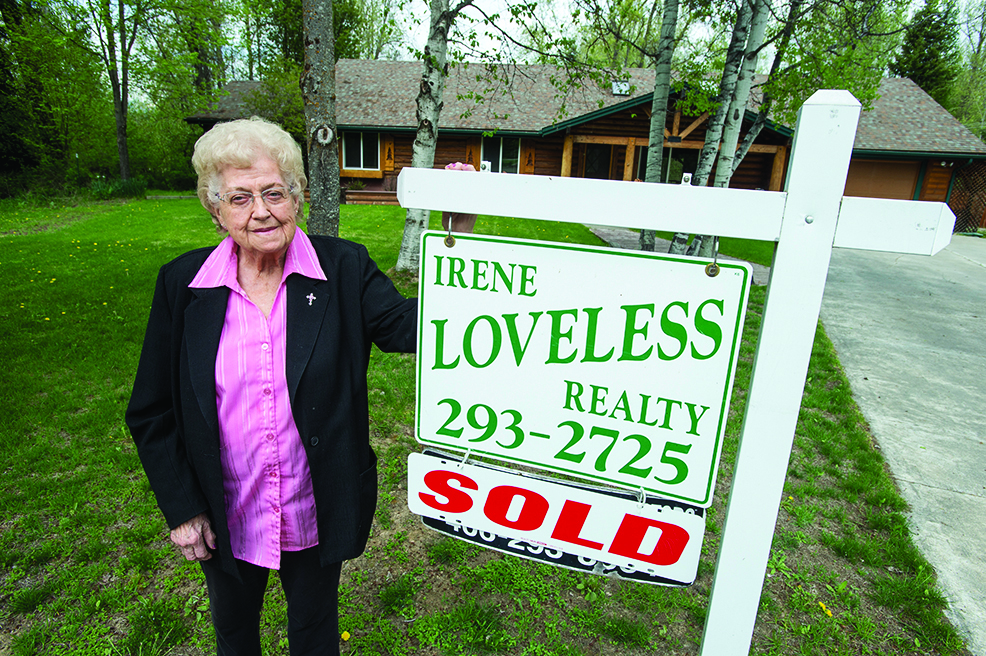
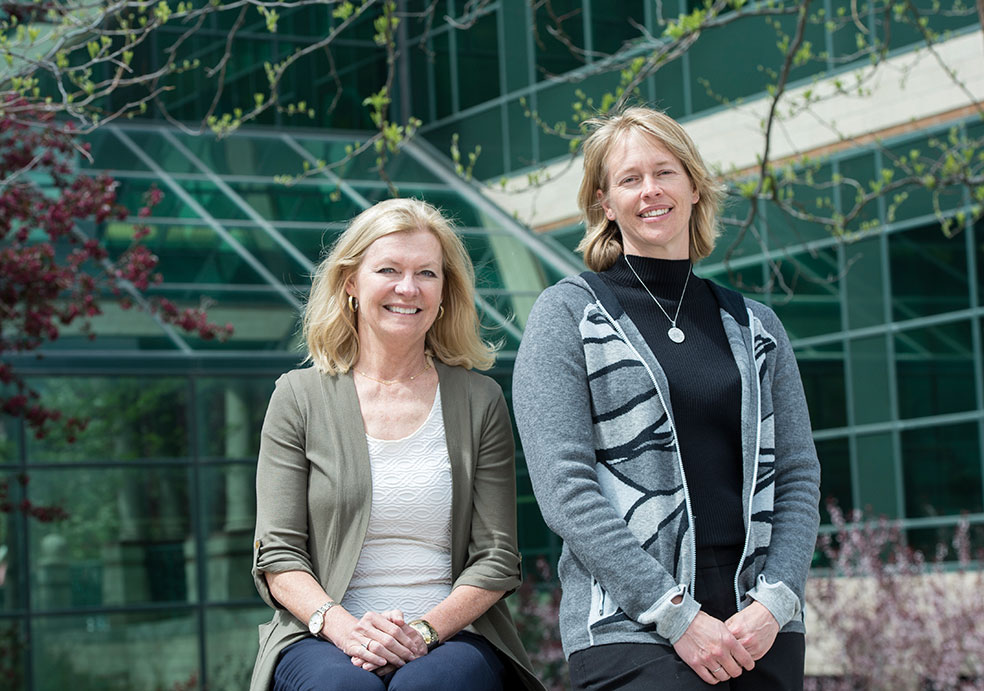

A drive to Libby, Montana, reveals a remote town nestled below the Cabinet Mountains Wilderness, where snow-capped peaks tower to the sky. The Kootenai River winds through the valley floor, surrounded by pine forests that stretch as far as the eye can see.
But if you’ve been in Montana long enough— if you’ve read the newspaper articles and seen the documentaries about Libby—a different, much darker image of the town emerges: how in 1999 national media first reported that a vermiculite mine contaminated the community for decades with asbestos. How civil suits mounted as more than 400 residents died from asbestosis over the years. How the federal government sued the mining company, W.R. Grace, for complicity—and lost. And how, since 2009, the Environmental Protection Agency has spent more than $500 million for the Superfund cleanup.
For some people, that’s still the dominant story. But Libby has changed. In February, the EPA announced it will wrap up its cleanup in four years and pull up stakes, declaring it a “clean town.” Despite that, shaking a tarnished reputation—let alone reigniting a depressed economy—is no easy task. Recently, in their effort to rebrand Libby, Lincoln County Commissioner Mark Peck and others decided to take action.
Peck grew up in Libby and remembers it as a boomtown with a Class AA high school and plenty of opportunity to go around.
“It was a really vibrant, happening place,” he says. “If you couldn’t find a job in Libby, you didn’t want one.”
Peck left in 1978 and went into the military. By the time he returned in 2010, the town had changed. It was still a beautiful place, but the national news and lawsuit took a toll: The population tumbled nearly 20 percent, the high school was on its way to Class B, and real estate prices plummeted. Almost worse than anything, the town was emotionally wrecked and divided over the national coverage. So Peck decided to run for county commissioner.
“I wanted to give back,” he says. “I’ve been able to do a lot of things in life I credit to growing up in Libby. I saw an opportunity to step up. If they wanted my help, I was willing to give it.”
Last spring, during a meeting with the Region 8 EPA director, Peck shared his concern about the town’s tainted reputation.
“I talked about how the perceptions out there aren’t anywhere near close to reality,” Peck says. “I said I want to know how to reverse that and get the right story out there.”
The EPA recommended Peck get a hold of a professor at Seattle University. But Peck had another idea: Why go to Washington to help a Montana town? Why not approach the University of Montana?
Peck made a call to Bill Johnston, director of UM’s Alumni Association. Johnston also grew up in Libby—the two had played Little League together.
“I asked him, ‘As two Libby boys talking together, how good is the School of Business Administration if we were going to put Libby’s economic future in its hands?’” Peck recalls, “and Bill said, ‘It’s excellent.’”
Within a few weeks, Peck found himself at a table with UM business faculty and a marketing firm to discuss rekindling Libby’s image.
“It was a clear match,” Peck says. “I had a very a good feeling about it.”
The connection with Libby runs even deeper for UM than its business and journalism programs. In 2005, Tony Ward, an associate professor and vice chair of UM’s School of Public and Community Health Sciences, began looking at how wood-burning stoves were affecting air quality in the Kootenai Valley. Simultaneously, he and a group of Montana Tech graduate students and professors were testing to what extent asbestos could be found in the soil and trees.
“We found that a lot of the trees surrounding the abandoned mine had asbestos fibers in the tree bark,” Ward says. “We were involved in this wood smoke study, too, so the question came up: Does harvesting firewood create a potential for exposure? And then, what happens when people burn that contaminated wood?”
Over the next several years, Ward and the others did multiple studies to answer these questions. They found when people harvested the contaminated wood, they not only could end up breathing in the asbestos, they could get it on their clothing and transport it elsewhere. They also discovered that when contaminated wood was burned in a stove, the ash still contained asbestos.
“That has implications where if someone is cleaning ash out of their wood stoves, they can contaminate their homes,” Ward says.
The study results from Ward were used by UM Associate Professor Curtis Noonan in health studies on autoimmune, pulmonary function, symptom, and radiological outcomes in exposed populations. Ward’s studies with Montana Tech have helped locate hot spots near the mining site and provided the town with more tools for preventing contamination.
His work with Libby continues today, with a recent study completed involving Forest Service employees working in contaminated areas, which is yet to be released.
This isn’t the first time UM has engaged with Libby. In 1999, UM School of Journalism Professor Dennis Swibold got a tip from a student about a national newspaper working on a story about asbestos-related deaths in Libby. Swibold had three graduate students looking for a project—Benjamin Shors, Shannon Dininny, and Ericka Schenck—who agreed to go to Libby to track down the story.
“They were new to journalism, and they weren’t sure what the legal lingo was, but they knew there was a lot of interest in what was happening there,” Swibold says.
At the last minute, Kalispell’s Daily Inter Lake broke the story and the Seattle Post-Intelligencer followed with an award-winning series. But the UM grad students were able to publish their articles in the Missoulian not long after. They hadn’t broken the story, but they shared a piece of it while learning invaluable lessons. And all three students went on to shining careers in journalism.
Fast-forward a decade, and journalism Professor Nadia White had her class cover the W.R. Grace trial. Those students, along with a group from UM’s law school, produced a blog that was read across the country—even The Wall Street Journal wrote about it. The students also used Twitter to cover the entire trial, which, in 2009, was a relatively new platform to report stories.
UM students provided a much-needed voice for the Libby issue, but it came at a price.
“I am convinced without the publicity Libby wouldn’t have gotten near the money or attention or health care or cleanup it did,” Swibold says. “But it also is what led to this reputation that they are still trying to fight.”
For that reason, the scope of the Libby rebranding project is high and wide—a massive challenge for anyone to take on, let alone inexperienced students. Four UM faculty members—Bambi Douma, Joan Giese, Justin Angle, and John Chandler—accepted the proposal from Lincoln County to facilitate the project on campus through UM’s Small Business Institute. Lincoln County also hired Missoula marketing agency PartnersCreative to provide the professional branding chops the project needed while giving students the opportunity to learn from them.
“We went into it with the spirit of public-private partnership,” says Kevin Keohane, director of brand and talent strategy at PartnersCreative. “We bring the branding and tourism expertise and experience communicating about economic development efforts. The students bring a lot of the academic, boots-on-the-ground work.”
The first students to help PartnersCreative were part of Joan Giese’s Marketing and Sales Management class, a special-topics course. Giese, an associate professor in marketing with outside experience working for utilities and high-tech companies, worked with the students to design the research methodology for the rebranding effort. They needed to figure out where the research should focus and how it should be executed.
Like many students, Elizabeth Sicheri joined the class not knowing what she’d be getting into. Having grown up in suburban Chicago, she had no knowledge of Libby’s past.
“It’s been through so much,” she says. “I remember we were all thinking it sounded really intense and a little intimidating. Nobody really knew where we were going with it.”
The class of twenty-four students was divided into six teams, each tasked with pitching a design to PartnersCreative. Developing the methodology meant doing their fair share of preliminary research. The students looked at attitudes about Libby on social media and dug up numbers, such as housing prices and demographics.
Each team took a strikingly different path. Sicheri’s team, for instance, recommended the rebranding focus less on tourism and more on potential residents looking to settle in the area and raise families. They suggested research include a comparative look at Butte, which has similar economic and environmental stigmas to overcome. They also recommended setting up focus groups in Libby, as well as town hall meetings and in-depth interviews with business owners to find out why they like being in the community.
“It surprised me how many outside factors turn into what makes something a brand,” Sicheri says. “It’s no simple thing.”
Keohane jokingly compared the classroom competition to CBC’s reality television program Dragons’ Den, where entrepreneurs pitch ideas to win—and there were times it did emulate that dramatic air. For instance, when PartnersCreative realized they needed the design pitches two weeks earlier than originally stated, the students had to scramble to meet the request.
In mid-October, just a month and a half after they began, the students submitted their final design ideas to PartnersCreative. There was a winning team, but the outcome was much more collaborative.
“Out of the six presentations, not one of them had all of the solutions,” says Keohane. “But in aggregate, they gave us what we needed. Students bring that kind of rigor and questioning mindset where it’s really fresh. And I really value that.” For the students, the challenge of considering how Libby might re-imagine its image was a lesson many of them, Sicheri included, won’t forget.
“With branding, you tend to think of consumer products or businesses, but to actually brand a town was a different concept,” Giese says. “The fact that it was a town in Montana really pulled at their emotions. They really wanted to do an outstanding job because it was so meaningful.”
Marketing classes spend a lot more time in the present and thinking about the future rather than dwelling on the past. For the Libby project, however, knowing what the town had been through was essential. As Giese’s students worked on designing methodology, Bambi Douma, a professor of management and director of the Small Business Institute, tasked her students with reading old articles on Libby and a book, An Air that Kills, which the Seattle PI’s Andrew Schneider wrote with David McCumber.
“We just don’t do that very often in projects here—go back and look at what happened in the past,” Douma says. “So that was a great piece that was outside the ordinary for our students.”
After Giese’s students pitched their designs, PartnersCreative combined the best parts of them and handed them off to Douma’s class. Her students—a total of eleven—dove full bore into the research. They collected data and did comparisons with other towns like Libby. They also created hypothetical profiles of people who might move to Libby and figured out the steps they would have to take to make it happen. One student imagined a thirty-something from Seattle looking to find an accounting job and raise a family. Another student put herself in the shoes of an avid mountain biker looking for a new area to explore. What might turn them off from coming there, and what aspects would be appealing?
After doing a lot of desk research, Douma’s students visited Libby. They spent two days there, sitting in on listening sessions facilitated by PartnersCreative, as well as conducting in-depth interviews with business owners and surveys with residents. They met with some of the town’s most engaged community members, such as Ace Hardware owner Tom Gilmore, and Sarah Dinning and Kristin Smith, co-owners of Cabinet Mountain Brewing Co.
“We had several sessions with PartnersCreative about behavior—how to approach people and how to frame questions so as to not put anyone immediately on the defensive,” Douma says. “Most people aren’t excited when a stranger approaches them to ask questions, but the students were able to really use their student status.”
Instead of being wary, many residents welcomed the students, and some even took time off work to meet with them.
One student, David Brewer, spent time in Douma’s class analyzing real estate. When he got to Libby, he had the chance to meet with Irene Loveless, a real estate broker in the town since the 1960s. She was able to help Brewer understand the history of Libby through the lens of the housing market.
“There is definitely a difference between looking at it on a computer and then being on the ground,” Brewer says. “You do see a lot of interesting numbers when you look at a place like Libby. You can see that it’s a depressed community, but you don’t really know what it means until you go there and really see that it’s a tough place to get by.”
Just as important, however, meeting community members helped the students see firsthand the potential for Libby’s future.
“They got more and more invested in it,” says Sean Benton, PartnersCreative vice president and creative director. “Doing work that wasn’t just an academic exercise, but work that would live and breathe in the real world—that had a chance to shape or change people’s lives—is a pretty powerful experience.”
After fall semester ended, many of Douma’s and Giese’s students moved on to other things, but their hard work currently is being used by PartnersCreative and Commissioner Peck in the next stages of the rebranding effort. A number of important findings came out of the process. For instance, PartnersCreative realized that the rebranding should focus on Kootenai Valley as a whole—not just Libby—because it’s part of large landscape that boasts public lands and private opportunity.
“I think it’s important that people know Libby is just as safe as anywhere else to live,” says Peck. “But probably more important, it’s a tremendous place to live. Our strength is our remoteness and our beauty and our recreational opportunities.”
At the same time, the students’ research showed that it was important to residents that the valley not turn into next hot spot for fancy vacationers.
“We discovered that being in the Kootenai Valley is kind of a self-sufficient experience,” Benton says. “If you’re going to visit there or live there, you’re going to get out of it what you put into it, and there are people for whom that’s appealing. They don’t want a white tablecloth or someone to pamper them. They want to figure it out on their own. I think that’s an advantage for the community.”
The story of Libby has been told by many different people over the years—especially outsiders—and the rocky past always will be a part of it. But it doesn’t have to hold it back. Libby is a redemption story. And with the help of UM students, the rebranding project will be a way for the residents of Kootenai Valley to start a new chapter in that story—one that they get to write.
“It’s been a great experience working with UM’s business school,” Peck says. “I think the whole rebranding concept made sense to people here in Libby. We don’t want to forget the past—we want make damn sure we take care of the people that are still affected by it. But at the same time, it’s time to move forward. We need to go be what it is we want to be.”